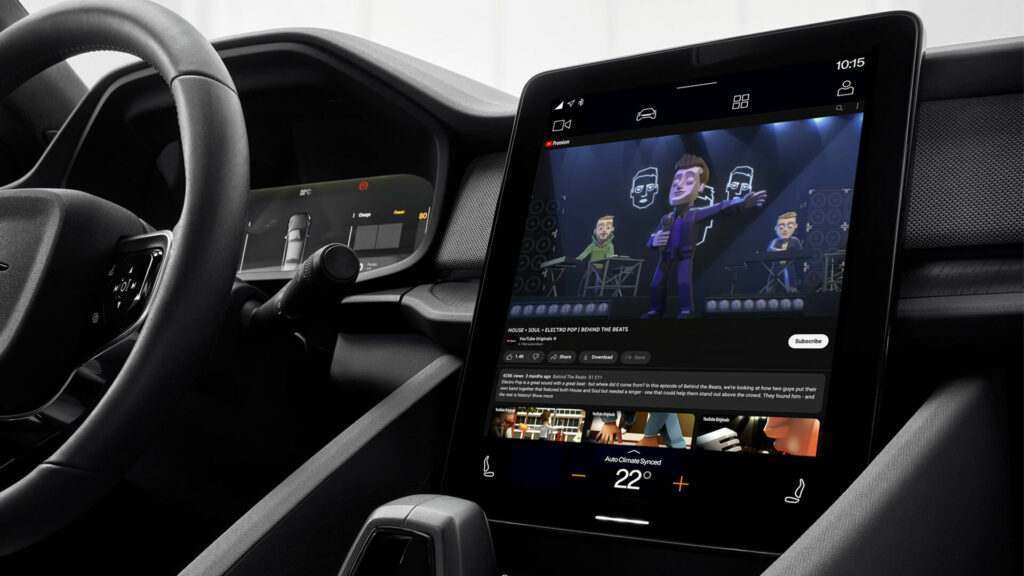Americans spend nearly 70 billion hours driving every year and Google wants to ensure that is time well spent. As part of that effort, they’ve used Google I/O 2023 to announce a handful of updates to Android Auto and Android Automotive OS.
Starting with Android Auto, Google added support for Zoom, Microsoft Teams, and WebEx by Cisco. This enables users to easily join scheduled meeting while in their car.
Most of the focus was on cars with Google built-in and the number of vehicles with the technology is expected to more than double by the end of the year. That’s a sizable jump and Android Automotive OS is getting updates focused on entertainment and communication.
More: Google Maps Now Makes Finding EV Charging Stations A Lot Easier
The big news is the addition of YouTube, which will enable users to pass the time while waiting for their EV to charge or for their kids to get out of school. YouTube is now available in cars with Google built-in, and Polestar and Volvo will deliver it via an over-the-air update.
If you’re more into games than videos, you’re in luck as GameSnacks is coming to cars with Google built-in. This means users will be able to play games such as Beach Buggy Racing 2, Solitaire FRVR, and My Talking Tom Friends.
Google Assistant is also getting smarter in cars with Google built-in as it will be able to “share smart suggestions so you can quickly respond to messages, share your arrival time, and more with a tap from your display.” The feature will arrive in the coming months and should enable drivers to stay focused on the task at hand.
Those are nice additions, but navigation remains the most important use case. While Google Maps is hard to beat, Waze is now rolling out globally for cars with Google built-in. Users can download the app from the Google Play Store and take it out for a spin.
Speaking of Waze, it’s getting some EV-focused features including the ability to “look up available EV charging stations that fit your EV plug type, near you or along your route.” The information is confirmed by members of the Waze Community, so ideally it will be accurate and up to date.
Other notable updates include the ability for navigation apps to use digital instrument clusters to display turn-by-turn directions. Developers can also access additional sensor data such as range, fuel level, and speed.
Front passenger displays are quickly becoming the next big thing and Google is embracing this trend as they’ve announced front passengers will be able to “assist with navigation, choose entertainment options, and more” from a display of their own. The company went on to reveal multi-screen support is coming to Android Automotive OS 14. This will enable vehicles to have multiple displays with Google built-in and the company showed the ability for rear seat passengers to send content from their screen to front seat occupants.
Last but not least, weather and IoT (Internet of Things) apps are coming to cars while Google noted their Car App Library provides developers with templates to help bring apps to life. Google also worked to ensure it’s easier for developers to bring tablet apps to cars.



















